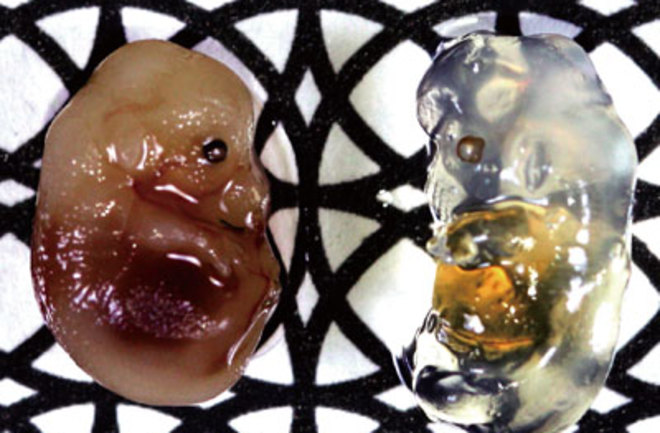A few weeks ago, I missed a half-day of work, transfixed by what looked like two clear Gummi Bears on my computer screen. It wasn’t a mid-afternoon blood sugar crash; I was contemplating photos of a mouse brain and embryo turned transparent after soaking in Scale—a cheap “clearing agent” that can be used to peer into normally opaque biological tissue.
The Funky Physics of Turning an Animal Transparent
How the science of light rules organic tissue and fiber optics alike.
By Jason Daley
Jul 19, 2012 5:00 AMNov 12, 2019 5:25 AM

Riken | NULL
Newsletter
Sign up for our email newsletter for the latest science news
0 free articles left
Want More? Get unlimited access for as low as $1.99/month
Stay Curious
Sign up for our weekly newsletter and unlock one more article for free.
View our Privacy Policy
Want more?
Keep reading for as low as $1.99!
Already a subscriber?
Find my Subscription
More From Discover
Stay Curious
Subscribe
To The Magazine
Save up to 40% off the cover price when you subscribe to Discover magazine.
Copyright © 2025 LabX Media Group
